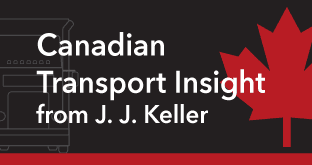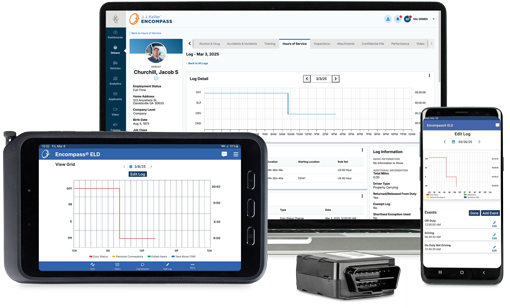Industry Business Advisor — J. J. Keller & Associates, Inc.
Canada and U.S. Personal Conveyance & Hours of Service Rules
Canada's Electronic Logging Device (ELD) regulations didn't change any hours-of-service (HOS) limits, but it can impact cross-border operations.
Published On: 03/15/2024


Written by:
Mark Samber
We all know that Canada and the United States have different hours of service rules and Cross-border drivers sometimes describe Canada’s hours of service regulations as a less restrictive version of U.S. hours of service rules. For the most part, they are. In Canada, drivers can drive for longer periods with less off-duty time compared to U.S. regulations.
While Canada hasn’t changed any limits with the implementation of federally mandated ELDs, questions surrounding the primary differences between the two country’s rules have resurfaced.
One major area of discussion has been on the use of personal conveyance (PC) in Canada compared to the United States.
U.S. Guidance for Personal Conveyance
In the United States, a driver may record time operating a commercial vehicle for personal conveyance as off-duty only when the driver is relieved from all responsibility for performing work by the motor carrier, regardless of whether the vehicle is laden. Before this guidance was issued, drivers could only log “off duty” for PC if the vehicle was unladen. FMCSA’s guidance on PC provides several scenarios in which it's allowed.
Canada’s Take on Personal Conveyance
In Canada, commercial drivers subject to the hours-of-service regulations are limited to 75 kilometers (47 miles) of PC per day (logged as off-duty) if the vehicle has been unloaded and trailers have been unhitched. The 75 kilometers is the actual distance traveled, not the radius distance. Drivers are also required to keep track of PC starting and ending odometer readings and subtract that distance from the total distance traveled for the day.
Canadian Enforcement
For a U.S.-based driver operating into Canada with PC-time logged, this time may present an issue. Personal conveyance in the United States does not always qualify as personal conveyance in Canada. An officer that sees PC on a driver’s record of duty status (for the current day or previous days) will first try to determine if its' use met Canada’s requirements.
If the officer determines that the use of PC met Canada’s requirements, that time will be considered as off-duty time.
However, if it did not meet Canada’s requirements or the officer questioned it, the officer would count the time as on-duty/driving and count the time towards the on-duty/driving/cycle time accordingly. The officer would not consider the log falsified, as the record was true and correct at the time when the driver was in the U.S.
Areas of Concern
A driver from the U.S. with personal use time logged that does not meet the criteria for Canada’s personal use provision may bump up against their hours available in Canada, depending on the extent of personal use of a commercial vehicle before entering Canada.
As far as daily limits in Canada, a driver could approach the requirement to stop driving upon reaching the 14th on-duty hour in the day or work shift, as time spent in PC in the United States would then be counted towards driving or on-duty time for the day/work shift.
And because U.S.-based drivers are using ELDs upon operation into Canada, drivers should know that they may need to look back at previous days’ logs and manually calculate hours.
Cross-border carriers should take a closer look at their drivers’ PC time in the United States, especially if drivers are frequently using the U.S. PC allowances and regularly operating into Canada. Addressing the issue ahead of time can help avoid problems in Canada.
Manage Canadian Hours-of-Service Compliance with the Encompass® Fleet Management System
The Encompass® ELD mobile app currently supports Canadian and U.S. carriers with its border-crossing features and Canadian rule sets. The driver-friendly app works with iPhone® and Android™ devices, helping fleets who need on-the-go flexibility. Learn more.
You may also enjoy the following articles:
Sign up for our newsletter!
We'll help you stay on top of regulations, best practices, and fleet industry news. Sign up to receive a monthly email notification with links to our most recent blog articles, free resources, and event invites.
